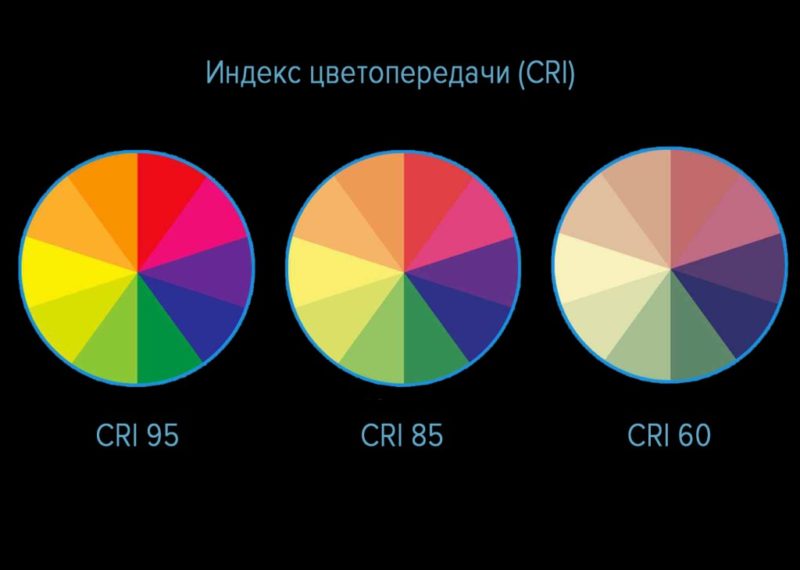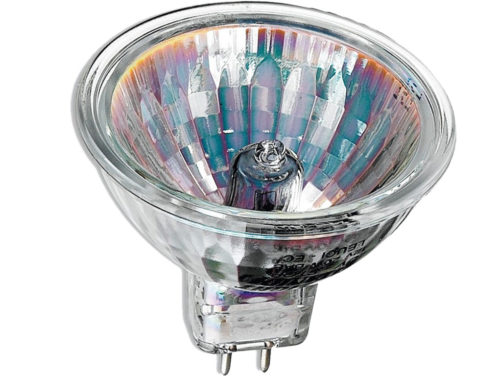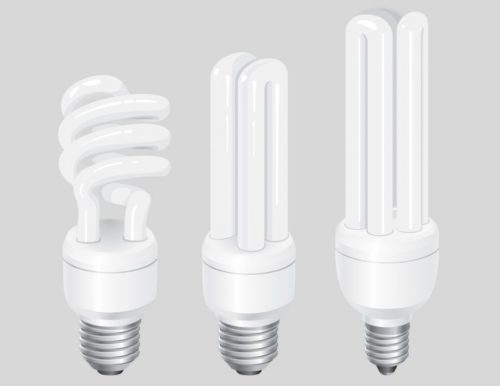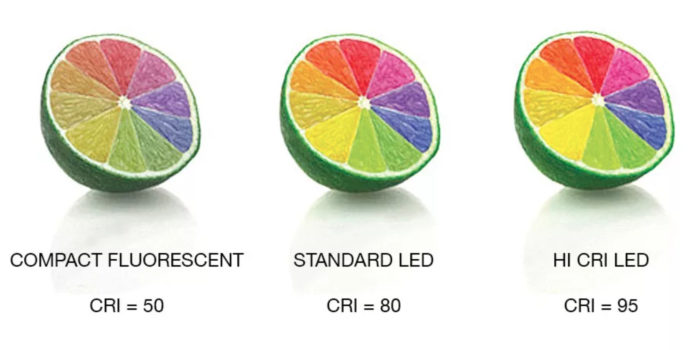Color rendering of LED bulbs
When using different lighting fixtures, you may notice that one light makes the surrounding objects bright and expressive, while the other seems to eat up some of the color. For this phenomenon is a special parameter of lamps, called color rendering index (CRI). Color rendering characterizes the correspondence of the visual perception of color to the spectrum of the illuminant.
What is CRI
The color rendering index is referred to as CRI (Colour Rendering Index). The term originated in the 1960s. It is defined as eight primary unsaturated colors and six secondary saturated colors. These colors are called test shades.
The index is Ra and varies from 0 to 100 Ra. The upper limit of 100 Ra is the accepted color rendering index of sunlight. This parameter is rather relative, because color rendering is influenced by weather conditions, time of day, and the hemisphere where the light falls.
During a color rendering measurement of a particular instrument, the instrument illuminates the set test colors. At the same time, these colors are illuminated by a reference light source whose CRI is as close as possible to 100 Ra. The hue saturation is then compared and the resulting difference is used to conclude the color rendering index of the tested product.

In simple terms, the color rendering index shows how natural all the colors and colors illuminated by a particular luminaire appear to the human eye. The human eye is tuned to perceive colors in sunlight, so it is taken as a reference. And the human eye is able to adjust the display of colors depending on specific weather conditions or time of day. A similar adjustment occurs when objects are lit by incandescent elements in incandescent lamps and halogen devices.
LED lamps function on a different principle, which means there is no automatic color correction by vision. It has been observed that red hues are the worst in this type of lighting. In particular, a person's face will appear gray when lit with low-quality LEDs. Using good LED fixtures will only make the color warmer by a couple of shades. But it also does not fully convey blush.
Models with a color rendering index of at least 80 Ra are the most comfortable. For workplaces and areas with high lighting requirements, it is better to achieve an index of 90 or even 100 Ra.
You have to see it: Green Skin or the Age of Disgusting Light. CRI Index
How to measure the color rendering index
When measuring the color rendering index, the deviation of apparent light from natural light is taken as the basis. The smaller it is, the better the performance of the light source.
The following table shows the CRI values and the corresponding light characteristics.
| Characteristics | Extent | CRI |
|---|---|---|
| Low | 4 | |
| Sufficient | 3 | 40-59 |
| Good | 2В | 60-69 |
| Good | 2А | 70-79 |
| Very Good | 1В | 80-89 |
| Very good | 1А | > 90 |
There are systems of mathematical algorithms for evaluating color rendering. They compare the changes of radiation in the spectral scale of the device with the values of the reference light source. These values are subtracted from 100 and the CRI index is obtained.
If the difference between the colors is insignificant, the source is assigned a value of 100 Ra.
Color rendering index
Let's look at the color rendering indexes of the most popular luminaires. The index depends on the design of the luminaire, the principle of operation and the quality of the elements used.
Sodium lamps
Sodium lamps are a specific light source which are not often used in rooms with working people. Limitations are due to the following features:
- The choke buzzes loudly when in operation;
- takes a long time to ignite;
- low color rendering index of about 40 Ra.
High-pressure sodium lights are widely used in streetlights and spotlights. They boast an impressive luminous flux about 150 Lm/W and an operating life of 25,000 hours.
They are gas-discharge light sources with a smooth spectrum and a predominance of red-orange shades. This spectrum allows the devices to be used as a light source for plants in greenhouses.
Halogen lamps
Halogen light sources are characterized by high luminous flux, impressive power consumption and high color rendering. This is very close to daylight and is often taken as 100 Ra.

Incandescent bulbs
Traditional incandescent bulbs are gradually disappearing from store shelves because of their low efficiency. But they have one huge advantage: A color rendering close to sunlight color rendering of 100 Ra. At the same time, there is a significant shift towards the warm shades of the infrared range.

Fluorescent lamps
For a long time, fluorescent lamps were in demand due to their energy efficiency and safety. However, the advent of a large number of affordable LED devices has somewhat reduced demand and pushed fluorescent light sources to the sidelines.
The devices are characterized by a jagged spectrum, clearly shifted to the area of cold shades. They cannot function stably without special ballasts.

The color rendering index depends on the phosphor used in the lamp, 60 Ra to 90 Ra. High values are characteristic of five-component phosphors.
LED lamps
LED lamps also use a phosphor. It covers the LED crystals and affects the color rendering parameters. The color rendering index of modern LED lamps begins with a value of 80 Ra. The optimal value seems to be 90 Ra, but you can find more. The lamps are actively used in any type of room without any restrictions.

DRL
Arc mercury lamps (ARL) are fairly powerful light sources, similar in their characteristics and purpose to sodium lamps. These devices can provide up to 10,000 hours of sustained service and have a luminous flux of approximately 95 L/hr. luminous flux of about 95 Lm/W. Color rendering index is low, rarely exceeding 40 Ra. The spectrum shows a significant shift to blue and UV.

